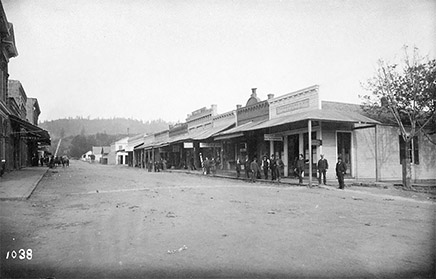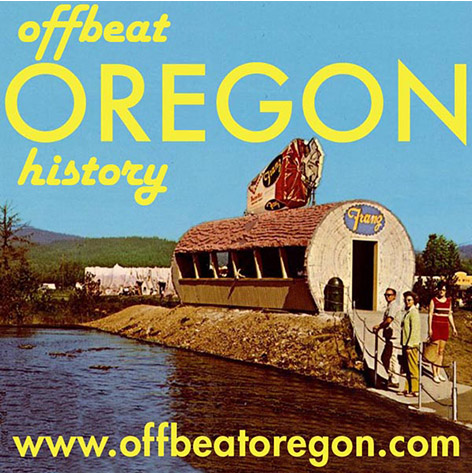SISKIYOU MOUNTAINS, JACKSON and JOSEPHINE COUNTY; 1853:
Quest for cabin gold vault led to madness and death
By Finn J.D. John
|

So as the leaves of the trees started to turn colors, signaling the approach of fall, the boys dug a large hole in the middle of their log-cabin floor, and lined it with close-fitting rocks. They wrapped up their gold in raw, untanned deerskins and basically filled up the vault with it. They covered the vault with a couple of large flat rocks so that it would be easier to probe for, pushed the dirt back over it, and started getting ready for the trip back to town. Soon they were on their way – Henry in front, James bringing up the rear, each leading two horses. They didn’t get far. They weren’t even out of sight of the cabin when a volley of shots rang out, and Henry dropped in his tracks. The horses reared and screamed, and a band of Shasta Indians burst into the clearing. James promptly shot one of them with his black-powder rifle, dropped it, and pulled his Colt Navy revolver. The Indians, seeing this and belatedly realizing that they were charging a still-armed foe with empty rifles, turned and scrambled back to cover. James took advantage of the break to leap onto the one remaining unwounded horse and take off, past Henry’s still and obviously dead body, galloping for the mouth of the valley and for home.
Perhaps sensing the end, he started writing letters to his cousin, Ted Harper of Chicago, telling him the whole story of the cabin and the Indians and the death of his brother. As soon as he got well, he wrote, he would be going back and getting his gold; but if he didn’t make it, he wanted Ted to know where it was. But he hadn’t quite gotten round to telling Ted exactly how to reach the cabin when, in the fall of 1859, death came for him.
“Dear Cousin: I had hoped to see you before this, but the end has come sooner than I expected. … I think it is nearly over. I must write what I intended to have spoken, and endeavor to give you such directions as will enable you to find the cabin, for you must find it. … The first part of your course is plain enough: Start from Jacksonville and keep the California road for –” At that precise point (as seems to be the case with most stories that include treasure maps or discovery directions) the text broke off with a smudge of ink, as if the writer had collapsed onto the page. And so ends Act One of our little drama. Act Two wouldn’t take place until about 15 years later, when cousin Ted enlisted the help of one of Oregon’s most famous pioneer poets to help him find the cabin and retrieve the treasure. We’ll talk about that in Part Two of this column.
|
Background image is an aerial postcard view of Haystack Rock and Cannon Beach, from a postcard printed circa 1950.
Scroll sideways to move the article aside for a better view.
Looking for more?
On our Sortable Master Directory you can search by keywords, locations, or historical timeframes. Hover your mouse over the headlines to read the first few paragraphs (or a summary of the story) in a pop-up box.
... or ...

©2008-2020 by Finn J.D. John. Copyright assertion does not apply to assets that are in the public domain or are used by permission.
